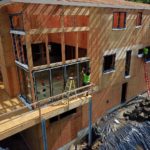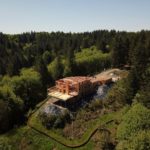I got some spools of Cat6 UTP, Cat6A UTP, and Cat6/FTP just to get an idea of the difference in thickness and routability. I did some test routes in a wall and around some bends as well.
Most Cat6 today is branded Cat6e (enhanced) and listed at 550MHz capable. Cat6A is often listed at 650-750MHz depending on the manufacturer, and the particular spool I have is listed at 750MHz.
The Cat6A is thicker than the Cat6, but the Cat6 FTP (foil shield over the entire pair group) is even thicker. In terms of bendability the 6 and 6A are not much different, while the 6/FTP is noticeably stiffer.
It is typically claimed that Cat6 can do 10Gig to about 60m although that depends a great deal on the environment. The newer 2.5G and 5G can both do 100m in Cat6.
Cost wise – The Cat6 is around $120-$130 per 1000ft, and the Cat6A is around $200 per 1000ft. I’m running 2 wires to every drop, and I have around 250 drops. I would guess the average drop is ~100ft, but that could be way off. In total I am thinking around 25000 ft of wire (about 5 miles), but to make it reasonable to pull I would probably need 30-40 1000-ft spools.
I am considering doing Cat6 to all of the cameras, motion sensors, and other IOT devices, and doing 6A to all of the access points, wall data drops, etc. That seems like a good mix of what is reasonable given the potential use cases.
I’ll do 12 bundle 9/125 singlemode fiber to some key places as well, especially the offices, A/V area, shop, etc. Given the really low cost of 2 or 4 bundle 9/125 fiber it is tempting to just run it everywhere along with the Cat6A.






































